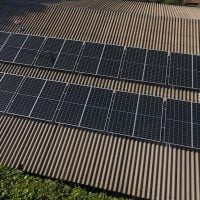Impact-based funding is a transformative approach that prioritizes measurable outcomes over traditional funding models. This paradigm shift is particularly relevant for NGOs, as it aligns financial support with the tangible benefits delivered to communities. By focusing on the impact of projects, organizations can attract funding from donors who are increasingly interested in seeing their contributions lead to real change.
This funding model encourages NGOs to articulate their goals clearly and demonstrate how their initiatives will create lasting benefits for the populations they serve. To effectively leverage impact-based funding, NGOs must first understand the metrics that define success in their specific context. This involves identifying key performance indicators (KPIs) that resonate with potential funders.
For instance, if an NGO is working on a solar energy project, relevant KPIs might include the number of households gaining access to electricity, reductions in carbon emissions, or improvements in local economic conditions. By establishing a clear framework for measuring impact, organizations can present compelling cases to funders, showcasing not just what they do, but how their work translates into meaningful change. Are You Working on Solar Innovation or Clean Energy Access? Join us to receive updates.
Key Takeaways
- Impact-based funding focuses on the measurable outcomes and social or environmental impact of a project.
- Identifying key stakeholders and partners is crucial for building a strong network of support and resources.
- Defining the impact of solar projects involves assessing the environmental, social, and economic benefits they bring to communities.
- Crafting a compelling narrative helps to communicate the purpose and significance of the project to potential funders and investors.
- Incorporating data and evidence strengthens the proposal by providing concrete support for the project’s potential impact.
Identifying Key Stakeholders and Partners
Identifying key stakeholders and partners is a critical step in the development of any successful project. Stakeholders can include community members, local governments, businesses, and other NGOs that share similar goals. Engaging these groups early in the process ensures that the project is grounded in the needs and aspirations of the community it aims to serve.
For example, when launching a solar project, it is essential to involve local leaders who can provide insights into community dynamics and help build trust among residents. Partnerships can also enhance the effectiveness of an NGO’s initiatives. Collaborating with other organizations can bring additional expertise, resources, and networks to the table.
For instance, an NGO focused on renewable energy might partner with a local educational institution to provide training programs for community members on solar technology installation and maintenance. This not only strengthens the project but also fosters a sense of ownership among participants, increasing the likelihood of long-term success.
Defining the Impact of Solar Projects

Defining the impact of solar projects requires a comprehensive understanding of both immediate and long-term benefits. In the short term, solar projects can provide access to clean energy, which directly improves quality of life by reducing reliance on fossil fuels and lowering energy costs for households. However, the long-term impacts are equally significant; these projects can stimulate local economies by creating jobs in installation and maintenance, as well as fostering entrepreneurship through new business opportunities related to solar energy.
Moreover, it is essential to consider the broader environmental and social implications of solar projects. For instance, transitioning to renewable energy sources contributes to global efforts to combat climate change by reducing greenhouse gas emissions. Additionally, solar projects can empower marginalized communities by providing them with reliable energy sources that enable educational and economic activities.
By articulating these multifaceted impacts, NGOs can present a compelling case for support from funders who are interested in sustainable development.
Crafting a Compelling Narrative
A compelling narrative is crucial for capturing the attention of potential funders and stakeholders. This narrative should weave together the story of the community, the challenges it faces, and how the proposed solar project will address these issues. By humanizing the data and statistics associated with the project, NGOs can create an emotional connection that resonates with funders.
For example, sharing testimonials from community members about their struggles with energy access can illustrate the urgency of the project and highlight its potential impact. In addition to personal stories, the narrative should also reflect the organization’s mission and values. It should convey a sense of urgency while also instilling hope and optimism about the future.
By framing the solar project as part of a larger vision for sustainable development and community empowerment, NGOs can inspire funders to invest in their work. A well-crafted narrative not only informs but also motivates action, making it an essential component of any successful funding proposal.
Incorporating Data and Evidence
Incorporating data and evidence into funding proposals is vital for establishing credibility and demonstrating the feasibility of a project. Funders are more likely to support initiatives backed by solid research and statistics that illustrate both need and potential impact. For instance, presenting data on energy poverty in the target community can underscore the urgency of implementing a solar project.
Additionally, showcasing successful case studies from similar projects can provide evidence of what works and how it can be replicated. Moreover, NGOs should consider using both qualitative and quantitative data to paint a comprehensive picture of their project’s potential impact. While numbers can effectively convey scale and reach, qualitative data—such as interviews or focus group feedback—can provide deeper insights into community needs and aspirations.
By combining these two forms of evidence, organizations can create a robust proposal that appeals to both analytical and emotional aspects of decision-making among funders.
Outlining Clear Goals and Objectives

Outlining clear goals and objectives is essential for guiding project implementation and measuring success. Goals should be broad statements that reflect the overall vision of the project, while objectives should be specific, measurable, achievable, relevant, and time-bound (SMART). For example, a goal for a solar project might be to “increase access to renewable energy in underserved communities,” while an objective could specify “installing solar panels in 100 homes within 12 months.” Having well-defined goals and objectives not only helps NGOs stay focused during implementation but also provides a framework for evaluating progress.
Funders appreciate clarity in proposals because it allows them to understand what success looks like and how it will be measured. By articulating specific targets, organizations can demonstrate their commitment to accountability and transparency—qualities that are increasingly valued in impact-based funding.
Developing a Realistic Budget
Developing a realistic budget is a critical component of any funding proposal. A well-structured budget not only outlines anticipated costs but also demonstrates financial responsibility and planning acumen. When creating a budget for a solar project, NGOs should consider all potential expenses, including equipment costs, installation labor, training programs, maintenance, and administrative overheads.
It is also wise to include contingency funds to account for unexpected expenses that may arise during implementation. Transparency is key when presenting a budget to funders. Providing detailed justifications for each line item helps build trust and shows that the organization has thoroughly considered its financial needs.
Additionally, NGOs should explore diverse funding sources—such as grants, donations, or partnerships—to ensure financial sustainability beyond initial funding. A comprehensive budget that reflects both immediate needs and long-term sustainability will enhance the credibility of the proposal.
Demonstrating Sustainability and Long-Term Impact
Demonstrating sustainability is crucial for convincing funders that a project will have lasting benefits beyond its initial implementation phase. For solar projects, this might involve outlining plans for ongoing maintenance and support after installation is complete. Engaging local community members in training programs not only empowers them but also ensures that there are skilled individuals available to maintain the systems over time.
Furthermore, NGOs should articulate how their projects will continue to generate benefits long after funding has ended. This could include economic impacts such as job creation or increased local business activity resulting from improved energy access. By highlighting these long-term benefits, organizations can reassure funders that their investment will yield returns that extend well into the future.
Addressing Potential Challenges and Risks
Addressing potential challenges and risks upfront demonstrates foresight and preparedness—qualities that funders value highly. Every project comes with inherent risks; for solar initiatives, these might include technical challenges related to installation or community resistance due to cultural factors or misinformation about renewable energy technologies. By identifying these risks early on, NGOs can develop mitigation strategies that demonstrate their commitment to proactive problem-solving.
For instance, if there is concern about community acceptance of solar technology, NGOs might plan outreach efforts that include informational sessions or partnerships with trusted local leaders who can advocate for the project. By presenting a clear plan for addressing potential challenges alongside proposed solutions, organizations can instill confidence in funders regarding their ability to navigate obstacles effectively.
Engaging with Funders and Investors
Engaging with funders and investors is an ongoing process that extends beyond submitting proposals. Building relationships with potential supporters can significantly enhance an NGO’s chances of securing funding. This involves regular communication about project developments, sharing successes and challenges alike, and inviting funders to participate in site visits or community events related to the project.
Additionally, NGOs should seek feedback from funders on their proposals—this not only shows respect for their expertise but also provides valuable insights that can strengthen future submissions. By fostering open lines of communication and demonstrating genuine interest in collaboration, organizations can cultivate long-term partnerships that benefit both parties.
Evaluating and Refining the Proposal
The final step in developing a successful funding proposal is evaluation and refinement. After drafting the proposal, NGOs should seek input from colleagues or external experts who can provide constructive feedback on clarity, coherence, and overall effectiveness. This collaborative approach often leads to valuable insights that enhance the proposal’s quality.
Moreover, organizations should be prepared to adapt their proposals based on feedback from funders or changes in community needs or circumstances. Flexibility is key in ensuring that proposals remain relevant and compelling over time. By continuously evaluating their approaches and refining their narratives based on real-world experiences, NGOs can improve their chances of securing funding while also enhancing their overall impact in the communities they serve.
In conclusion, navigating the landscape of impact-based funding requires strategic planning, collaboration with stakeholders, clear communication of goals and impacts, financial transparency, sustainability considerations, risk management strategies, ongoing engagement with funders, and a commitment to continuous improvement through evaluation. By following these principles, NGOs can position themselves effectively to secure funding for solar projects that create meaningful change in communities around the world.









































